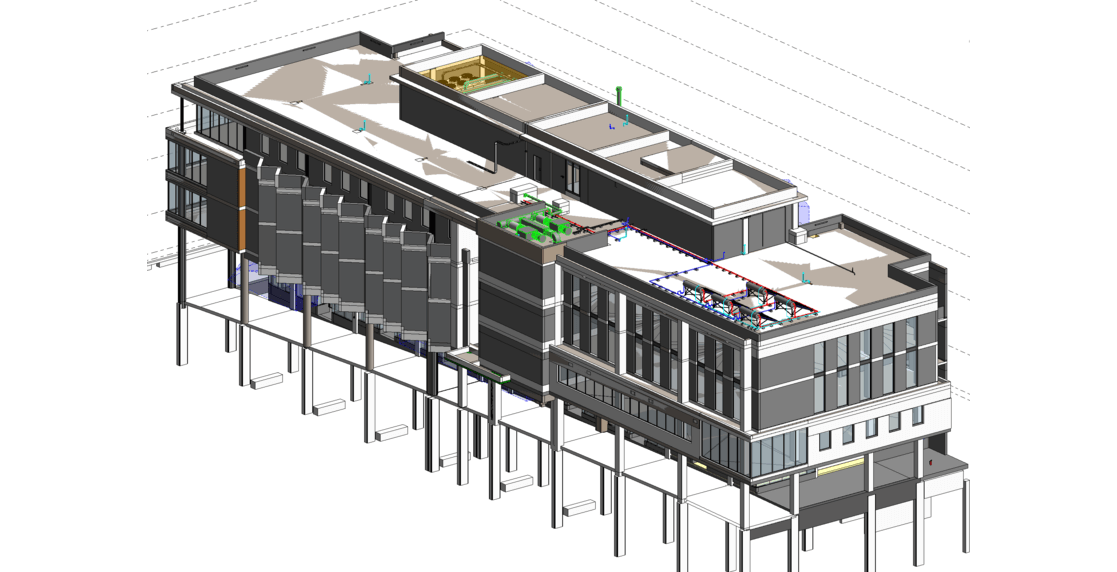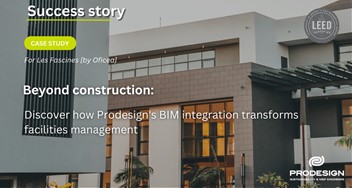Let us first start with the definition of BIM. For many, BIM is just a 3D modelling tool. It is a standardised process which involves creating and using modelling which includes all the aspect of a construction. BIM is the giant leap model-based platform that aid in making design, project, and operational information accurate, accessible and actionable for buildings and infrastructures. Using BIM allows better clarity for all stakeholders across a project lifecycle as it makes visualisation, simulation, collaboration and much better project outcomes are achieved through a complete flow of information among different applications and across distributed project teams for greater accuracy in the entire supply chain. The pioneering application of BIM by UK has been since helping to achieve project and business goals.
Construction drawings consist of many objects which can be visualised on any 3D model. What is the difference between these objects and a BIM object? With a BIM object, detailed information can be specified such as properties and technical specifications as well as the visual representation and positioning of the object, making the BIM object a smart one! The power of BIM lies within the accuracy of the information fed in to the model which must be defined according to approved standards. BIM management is the process of generating and managing digital representations, including the physical and functional characteristics of structures, utilities, and buildings. The robust software is not just building a 3D model; it shows how certain buildings and materials should hold up over time. All data input in BIM designs must be precise and according to the approved standards.
Building Consultants are faced with some challenges when it comes to the implementation of BIM by all the stakeholders. The initial shift towards using BIM as a centralised process for project delivery and standardisation of all processes requires some push. Using a model compliant with industry standards through a project life provides the team with an exact comprehension of the design and construction process that could not be accomplished using only traditional 3D data. It is possible to make more informed decisions and allows to test solutions in a virtual environment and in a cost-effective manner.
The integration of project estimation, scheduling, costing information, lifecycle information in addition to 3D modelling takes BIM beyond the 3D aspect into a 4D, 5D, 6D or even 7D model. BIM increases collaboration between Designers, and Subcontractors in the early phases of construction though the use of a common collaborative platform often referred to as a common data environment. BIM Managers are able to detect clashes, and in turn implement the resolution. Clash detection and constructability reports are usually common requests from a client. By using BIM, Engineers and MEP Designers can avoid design alterations, reduce risk, re-work, and provide cost saving to the clients. BIM models are also easier to share and modify than traditional designs. Inserting cost parameters and recording take-offs are at the surface of potential, along with other numerous financial benefits.
BIM underpins the efficient design, delivery and support of infrastructure and structures. With the positive outcomes of using such data-driven models, BIM is not merely a buzzword but a major driver of digital transformation in the construction industry.
The way forward
It is high time for the construction affiliates to implement BIM on the small or large scale projects. Digital advancements are fast-paced and ever-changing-what is new now will be old in a few months and it is essential to keep up with the change. The way forward is to embrace the intensity of advanced innovation and consolidate it in to building services to achieve positive change in the design, construction handover, operation of buildings, and infrastructure facilities.
Adopting BIM in the Mauritian construction industry can change the way that projects are handled and delivered. The whole team, from the Project Managers, Architects, MEP Consultants, Engineers to the Contractors can all work on a single platform and using a standard language by integrating BIM throughout a projects. Pro-Design Engineering Consultants Ltd has always believed in the power of innovation and is making coordinated efforts in switching to BIM and encouraging its partners to collaborate. Our team has adopted BIM 360 for many of its upcoming projects.





